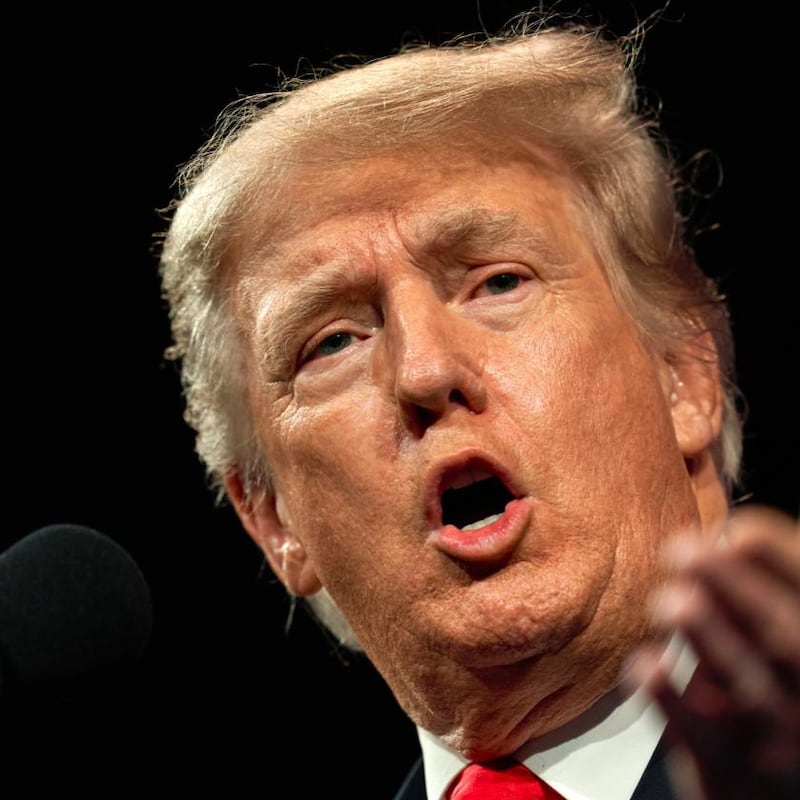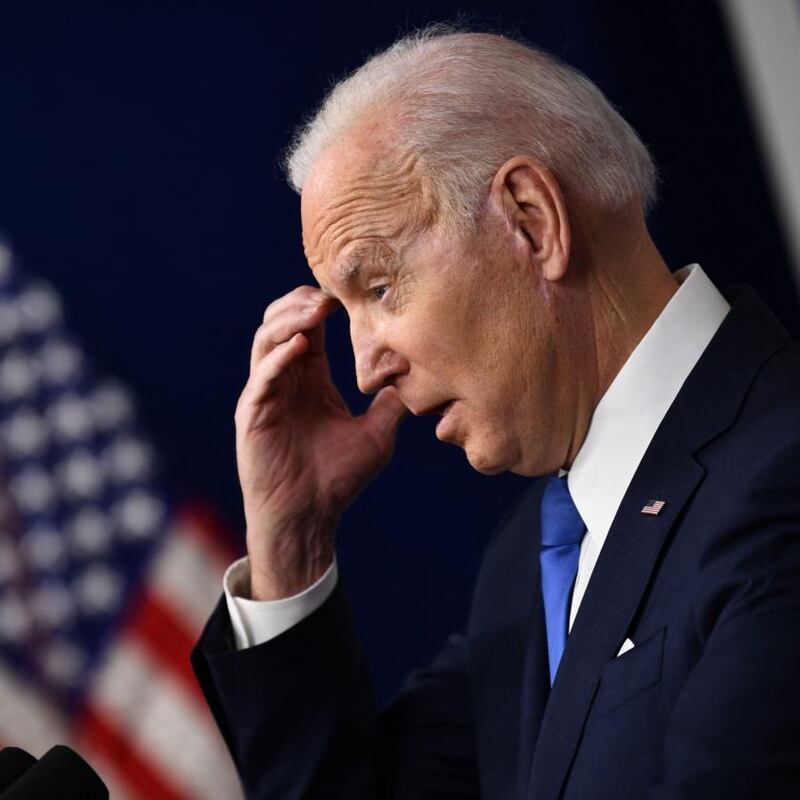In Joe Biden's boyhood hometown in Pennsylvania they are talking about rebuilding the old rail line to New York.
The last passenger train to run the 200km from Scranton to the Big Apple departed more than 50 years ago. The beautiful old station building at the heart of the city is now a hotel.
However, Biden's $1.2 trillion plan to rebuild America's often crumbling transport and other infrastructure, which was passed by Congress late last year, may open the door for the restoration of the line, which local Democrats believe could generate $87 million (€77 million) in annual activity and $2.9 billion in one-off investments along the route.
"It would be wonderful. Out of this world. Everyday people drive from here to New York City, which can take 90 minutes each way," says Biden supporter Jimmy Connors, a former mayor of Scranton.
Biden left Scranton for Delaware when he was a boy. He still has family and a lot of friends and supporters in the city.
Connors, who is a contemporary of the president, told The Irish Times in Scranton last week that “Biden is doing just fine”. He said the unemployment rate across the country is at its lowest level in 50 years.
“I can tell you anecdotally when I look around there are not a lot of people looking for jobs here. They are all working.”
Connors points to a rising stock market, which Donald Trump claimed would tank under a Biden presidency. He says Biden's critics highlight inflation and rising fuel costs, but he argues that inflation and gasoline prices are increasing worldwide.
"It really would be hard to lay the gas prices and inflation on Joe Biden."
However justifiable or not, placing the blame for inflation and rising prices at the door of the president is just what his Republican opponents are doing in the run-up to the midterm elections next November.
In a rally last weekend Trump blamed the president for a whole host of issues, from inflation to supply chain difficulties to crime and immigration.

Associate professor of political science at the University of Scranton Dr Gretchen Van Dyke says there is pride in the city at Biden’s achievement, and that he is seen as someone reflecting traditional values relating to the family and community which are strong in the locality.
She says Biden carried the city and the surrounding Lackawanna County handily in the 2020 election and a main street in Scranton has been renamed after him.
Van Dyke says that Scranton has for years been controlled by Democrats but that there are areas, particularly more rural locations, which could be seen as Trump country. There was a vocal protest when Biden visited last autumn, she says.
The different perspectives on the Biden presidency have come into focus this week as he completes his first year in office. The anniversary comes just as the president has had arguably his most difficult period in the job.
Biden's key domestic agenda is stalling. He does not have the votes in Congress to counter moves by Republicans in a number of states to make voting harder and less convenient. And amid infighting between the different wings of his Democratic Party and a worsening of the pandemic due to the Omicron variant, Biden's poll numbers have sunk to an average of 42-43 per cent.
If Republicans take control of Congress in November – which polls say is increasingly likely – the infrastructure package that may finance the restoration of the Scranton rail line may, along with a pandemic stimulus plan introduced last March, be the high-water mark of his presidency.

The first year
The first year started out with much hope for Democrats. Not only did Biden win the presidency, the Republican party appeared tainted by the riots at the Capitol in Washington by Trump supporters aimed at stopping the certification of the electoral college votes to determine who would take the White House.
To top it all Democrats won two key Senate seats in Georgia to give the party control of Congress.
However, in hindsight, this majority was more illusionary than real.
In truth a supermajority of 60 votes is needed in the Senate for most legislation to overcome any filibuster.
Biden, based on his decades of experience in the Senate, initially seemed to believe he could work across the aisle to achieve bipartisan agreement on key issues. But in the Washington of today, the main objective of many Republicans appears to be to deny the president any political victories.
In addition, for some crucial initiatives, Biden could not keep all the Democrats on board.
However, there were successes. Overall he secured funding of about $3 trillion from Congress between his pandemic stimulus package and infrastructure plan.
Unemployment is now less than four per cent and a Covid vaccination programme was rolled out at speed before essentially stalling as it encountered a bedrock of citizens – backed by some on the right – determined not to take the jab. About 63 per cent of Americans have had two vaccine doses but far fewer have received a booster.
Many of Biden’s problems stem from disagreements within his own party. The Democrats are a broad church including both progressives and those who are more centrist.
Democratic strategists originally envisaged going into the midterm elections selling to voters the benefits of new roads, bridges and rail lines under the infrastructure plan alongside an even more ambitious social spending plan to reduce health costs, improve education and housing, introduce initiatives for climate change other areas – all of which had their champions within different parts of the party.
However, the whole edifice came crashing down in December when West Virginia senator Joe Manchin said he could not support the Bill, citing the cost and its impact on the nation's debt and inflation levels.
Manchin and another Democrat, Kyrsten Sinema of Arizona, also refused to go along with Biden's proposals for an exemption to the filibuster rule to facilitate the passing of key voting rights legislation. The failure to implement measures to curb efforts by Republicans to restrict voting rights in some states has particularly angered African-American civil rights activists who played a key role in getting Biden elected.

To make matters worse, last week the supreme court shot down one of Biden’s core measures in dealing with the pandemic, the move essentially to make vaccination or regular testing mandatory for millions of private sector workers.
Virtually simultaneously, new data showed inflation had reached a 40-year high. The bellwether product in America – gasoline – is again heading upwards in price after a brief fall, signalling potential danger ahead for the president.
Polls suggest Americans appear to be in an unhappy mood nationally, whether it be from exhaustion from the pandemic or anger at rising prices or supply problems.
So where does Biden go from here? Democrats could try to dilute the social spending plan to overcome Manchin’s objections. However, that runs the risk of losing support from progressives.
On the other hand, going into the midterms with no social initiatives to campaign on after two years in power is also unappealing.
The Biden administration has also created some of its own problems. Insufficient focus would appear to have been given to the possibility of a resurgence of Covid and the emergence of Omicron has seen much of the country experience a major shortage of test kits, while cases surged and hospitals filled up.
As much as the current deadlock may frustrate the Biden administration, a Republican takeover of Congress next November could leave it facing even more serious problems, with slim-to-zero prospects of passing major domestic initiatives.
Republican senator Ted Cruz last week raised the prospect of a Republican Congress moving to impeach Biden, largely because the Democrats had "weaponised" this process against Trump.
The chaotic scenes surrounding the withdrawal from Afghanistan may also return to the political agenda. A Republican Congress may pore over the whole issue and, in particular, the suicide attack in the final days at Kabul airport that killed 13 American service personnel.

















